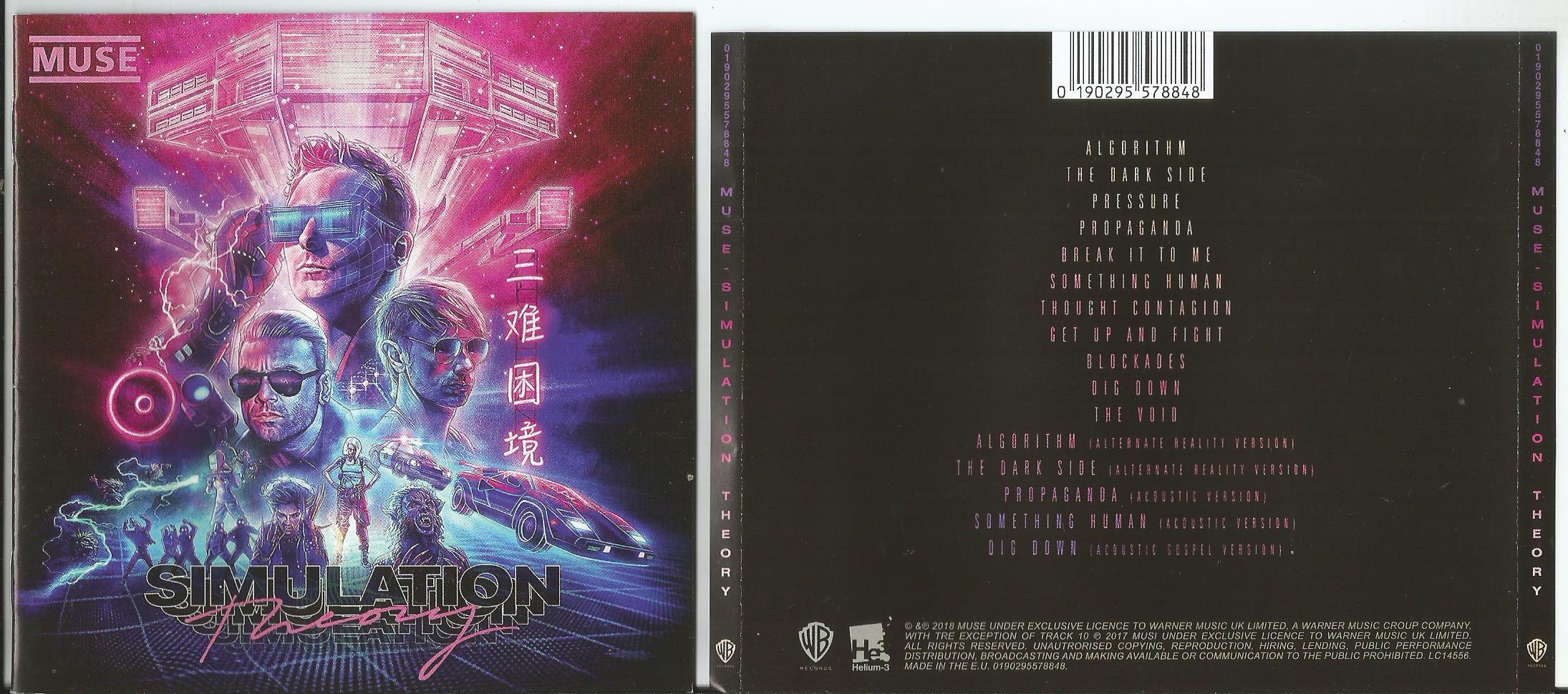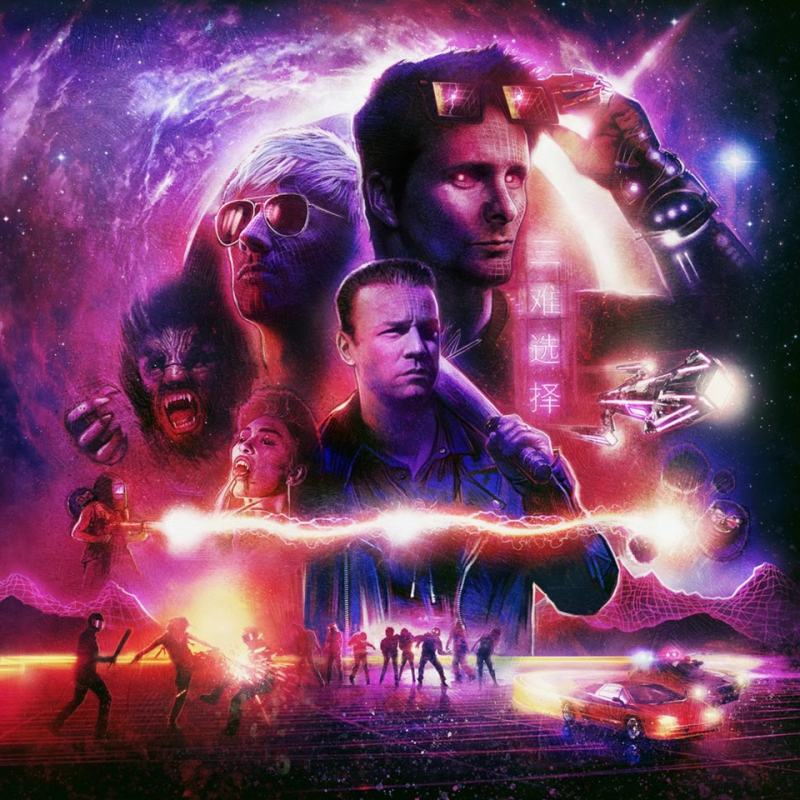

Throughout the album, frontman Matt Bellamy sings like he’s trapped in a popcorn flick: “Break me out/Let me flee,” “Don’t push me/Let me get off the ground,” “Let’s face all our fears come out of the shade,” “Get up and fight,” “Smash, test, beat the best/Fight for your life.” It feels like the same Mad Max sequel that My Chemical Romance escaped from in 2010, especially on modern rock rager “Get Up and Fight,” a song neither as arch or as catchy as MCR’s “Na Na Na (Na Na Na Na Na Na Na Na Na)” The synth throbs of “Algorithm” and “The Void” seem borrowed from Kyle Dixon and Michael Stein’s soundtrack to Stranger Things, which co-creator Matt Duffer said originally got its tone from “putting John Carpenter music over shots from E.T.” “Dig Down” fast-forwards to George Michael’s “Freedom ’90” which was a rewrite of Aretha Franklin’s “Think.” The album cover was done by Stranger Things artist Kyle Lambert, who took influence from artists like Blade Runner designer Drew Struzan. The neon pink cursive font feels borrowed from Drive, which borrowed it from Risky Business. Let’s hope there isn’t too many lasers when they play live.The cover of Simulation Theory looks like the poster to Ready Player One and Muse’s mining of the Eighties seems just as deep: a set of references that have already carried weight for years. On paper, some strange dreamy pop melding with a stadium rock band shouldn’t be seamless but they’ve managed to pull it off.

Simulation Theory is an album that pushes the conventional Muse sound in a way that ends up being oddly complementary. Each song has its own accompanying video and the entire thing featured heavy production input from the band themselves, something you can tell through just listening to it. The thing that sets Simulation Theory apart is that you can hear how much they enjoyed writing and recording this album. Synthesised horns do battle with Bellamy’s guitar riffs in the main verses, and also add an endearingly cheesy element to it. Chris Wolstenholme relies on a myriad of effects that makes his bass tone sound like something out of Tron, and you’d nearly be forgiven for mistaking it as a guitar on the first listen. Pressure features one of those iconic bass riffs that will inspire people to pick up the instrument, just like Hysteria did way back in 2003. Yet they still manage to make silky synth-pop meld with it to create something brand new, but undeniably Muse. The Dark Side features some of Bellamy’s best vocals and rolling piano arpeggios while Pressure has the monster stadium-filling riffs that the trio are so well known for. This in itself is a victory for any band, but for Muse to still be doing it as consistently well is hard to comprehend. Muse have been around since 1994 and in that time, they’ve rode the turbulent waves of an ever-changing musical climate, constantly evolving their sound and never allowing it to stagnate. It feels fresh out of Blade Runner and really creates a post-apocalyptic feel through menacing synthetic beats.

There’s the usual apocalyptic prophecies, with Bellamy warning “evolve, push us aside, render us obsolete” on opener Algorithms. This time around though, they seem to have pulled it off. It’s pretty clear that this whole concept album thing is something Muse are adamant on sticking to – this is the fourth album in a row they’ve tried it. Simulation Theory sees them embrace pop and roll with it, fusing Matt Bellamy’s haunting vocals with a narrative about a simulated world.

If there’s one thing you can depend on Muse for, it’s that they release some really off the wall stuff.Ģ015’s Drones was a rock-opera that was so over the top, it was difficult to really understand what they were getting at.


 0 kommentar(er)
0 kommentar(er)
